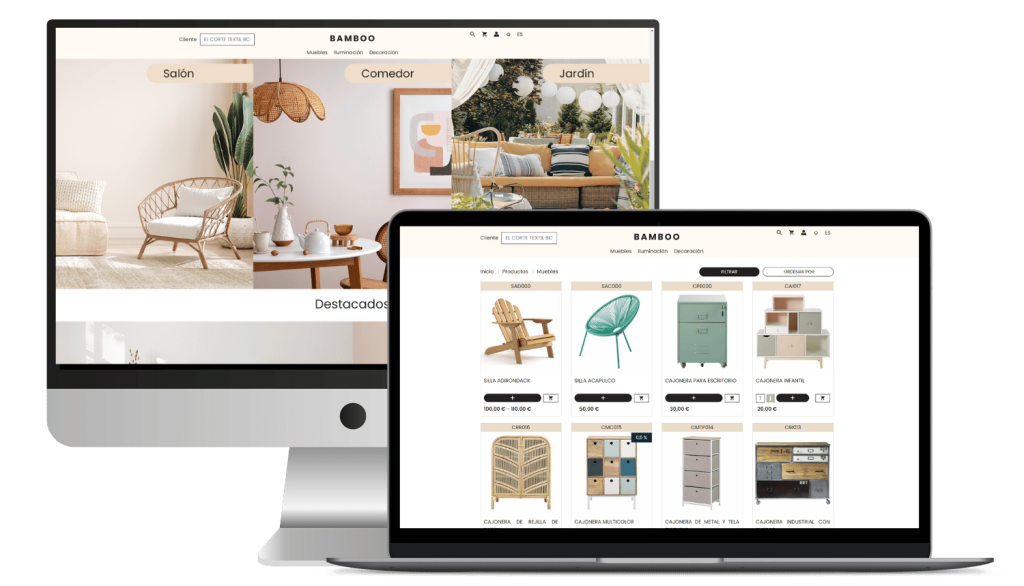What are the main types of market segmentations that exist?

1. Geographic segmentation
Geographic segmentation divides the market into geographic areas such as countries, regions, cities or even neighborhoods. This type of segmentation is based on the premise that consumers’ needs and preferences may vary depending on where they live.
For example, a clothing brand may launch a winter collection in colder regions of the country while in warmer areas, it opts for light clothing collections all year round. In this way, it ensures that its offer is tailored to local climatic conditions and maximizes its effectiveness in each market.
In addition, geographic market segmentation is useful for local marketing campaigns and inventory optimization, allowing companies to offer products that are better adapted to the needs of consumers in different regions.
2. Demographic segmentation
Demographic segmentation is one of the most widely used in marketing. It is based on objective and measurable characteristics of the population, such as age, gender, income level, education level, marital status and occupation.
This type of market segmentation is particularly useful because consumers’ needs and preferences are often closely related to their demographic situation. For example, a company that sells baby care products is likely to focus on women between the ages of 25 and 40 with young children, as they are its most relevant target group.
The simplicity and accessibility of demographic data make this a popular choice for companies looking to create more targeted and effective campaigns.


3. Psychographic segmentation
Psychographic segmentation focuses on dividing the market according to consumers’ lifestyles, values, opinions and attitudes. Unlike demographic segmentation, which is based on more objective characteristics, psychographic segmentation focuses on the subjective factors that influence purchasing behavior.
For example, a company that sells luxury products may segment its market according to those consumers who value exclusivity and social status. In this case, it would not be a question of income level, but of the perception and values that consumers associate with luxury brands.
This type of market segmentation allows brands to connect emotionally with their audience, developing products and messages that resonate at a deeper level with consumers’ interests and values.
4. Behavioral segmentation
Behavioral segmentation is based on consumer behavior, including buying patterns, brand loyalty, benefits sought and product or service usage. This type of segmentation allows companies to group consumers according to how they interact with the product or service, providing a more practical and actionable view.
For example, a software company can segment its market into new users, advanced users and users looking to upgrade their current plan. By understanding the different behaviors, the company can customize offerings and strategies for each group.
For example, a software company can segment its market into new users, users who are looking to upgrade their current plan and users who are looking to upgrade their current plan. By understanding the different behaviors, the company can customize offerings and strategies for each group.
Transform your ERP into a powerful B2B ecommerce system

5. Segmentation by benefits
This type of market segmentation focuses on the specific benefits that consumers seek when purchasing a product or service. In other words, it groups consumers according to the reasons or motivations that lead them to purchase a particular good.
A clear example is the market for technology products, where some consumers value product durability, while others prioritize innovation or value for money. By identifying the most valued benefits, companies can tailor their offerings to each group and create more attractive and relevant campaigns.
The importance of combining different types of segmentation
Although each type of market segmentation has its advantages, many companies choose to combine them to get a more complete view of their target audience. For example, an apparel brand might use geographic and demographic segmentation at the same time, adjusting its offering based on the location and age of consumers.
In this way, greater precision is achieved when creating personalized marketing campaigns, improving not only conversion rates, but also customer satisfaction.
Conclusion
The market segmentation is a key strategy in modern marketing that allows companies to divide their audience into smaller, more homogeneous groups, thus optimizing the personalization of their campaigns. Each type offers distinct advantages and many companies combine several to obtain a more complete view of their audience.
At Stoam SaaSwe provide tools for B2B e-commerce B2B e-commerce can take full advantage of these strategies, optimizing the shopping experience and improving conversions. Our software allows you to manage and customize your online store effectively, adapting your actions to each market segment. If you want to boost your ecommerce, we invite you to learn about our pricing and get in touch contact with us. For more information, please visit our blog or write us directly.
Share:
Related Articles

What is a marketplace? Find out how to get the most out of it
What is a marketplace? Find out how to get the most out of it In today’s digital world, marketplaces have

Business to consumer (B2C): how it works and how it differs from B2B
Business to consumer (B2C): how it works and how it differs from B2B In today’s world, e-commerce and direct business-to-consumer

Alibaba revolutionises B2B commerce with ‘Accio’ – the AI-powered search engine for SMEs
Alibaba revolutionises B2B commerce with ‘Accio’ – the AI-powered search engine for SMEs Share: Tabla de contenidos What is Accio

Examples of market segmentation: How to apply it in different sectors?
Examples of market segmentation: How to apply it in different sectors? In today’s competitive business landscape, market segmentation is more

Omni-channel strategy: How to integrate all channels to improve customer experience
Omni-channel strategy: How to integrate all channels to improve customer experience In a world where consumers use multiple channels to

What are open APIs and their role in SaaS solutions?
What are open APIs and their role in SaaS solutions? Open APIs have transformed the way businesses use software, especially

Analysis of B2B marketplaces: Are they an opportunity or a threat?
Analysis of B2B marketplaces: Are they an opportunity or a threat? B2B marketplaces are transforming the way companies buy and

How to use chatbots in B2B ecommerce to improve conversions
How to use chatbots in B2B ecommerce to improve conversions In the world of ecommerce B2B (Business to Business)shopper expectations

ERP and sustainability: How a system can reduce environmental impact
ERP and sustainability: How a system can reduce environmental impact Sustainability has become a crucial priority in today’s business landscape.
Automate orders with Stoam SaaS b2b ecommerce

